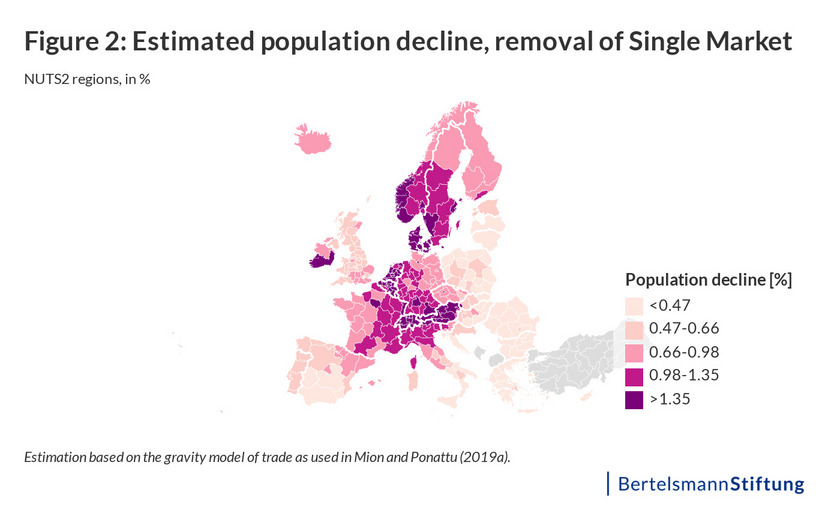Much of the current debate on the European Single Market centres around its direct economic value. It mostly focuses on productivity, competition and ultimately welfare effects. In this policy brief, we discuss to what extent these welfare effects may also impact on population size. Specifically, we employ a gravity model of trade to simulate the effect of welfare changes on population sizes across Europe assuming that the Single Market would suddenly cease to exist. These hypothetical changes in population size can be interpreted as a result of citizens’ shifts in location choice based on welfare changes resulting from abolishing the Single Market and thus increased trade costs vis-à-vis countries not part of the common economic area.
It should be noted that the simulated population change resembles a hypothetical choice solely based on changes in welfare. Even if people sought to move locations accordingly, there would be legal and other hurdles impeding them from doing so. Therefore, the estimates reported here should be seen as an upper bound of population declines that a country or region could see as a result of the Single Market ceasing to exist. However, the relative differences in the losses allow us to compare the differential impact across countries and regions.
The simulation shows that a removal of the Single Market agreement would clearly weaken trade integration across Europe vis-à-vis the rest of world. Welfare and population declines are linked: The simulation suggests that all countries and regions currently in the Single Market would lose part of their population if the trade liberalization policies of the Single Market were to be removed. The magnitude of losses differs quite strongly: on one hand, regions that economically benefit the most from the Single Market (e.g., Switzerland, Austria, Ireland, Norway and Germany) would see a significant reduction in population size. On the other, regions in the European periphery (e.g., in the South-East) would see very little change in population size if the Single Market were to be removed. Differences within countries are also noteworthy: Germany would see a strong East-West divide, as would France. Regional disparities within Italy and the UK would largely resemble a north-south divide.








